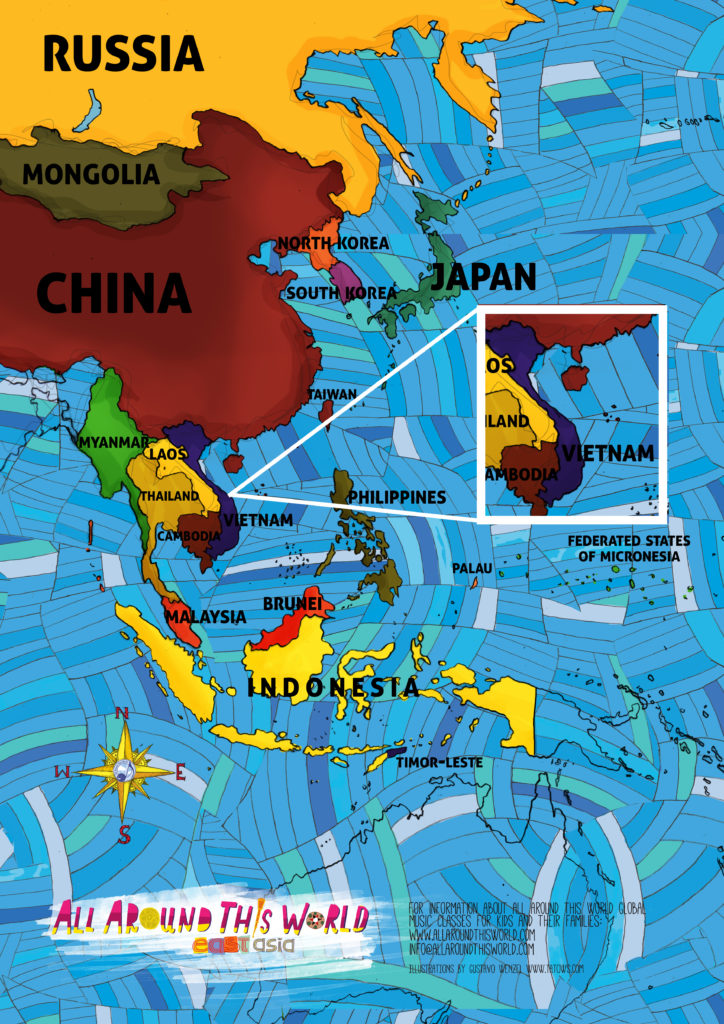“Hai Hoa” is Vietnamese farming song, sung about the flower harvest.
When we sing the song in our classes we “pick” our children as flowers, putting colored scarves over their heads, clapping and singing and harvesting all. Colorful flowers — brilliant yellow, orange and red blossoms — are an essential symbol of renewal and good luck during Vietnamese Lunar New Year celebration of Tet. Flower farms in Vietnam prepare all year for the December harvest in advance of the February holiday. While we’re not singing this Vietnamese farming song ourselves we can enjoy the heck out of this video of Tran Quang Hai’s exciting version, performed on the coin clappers.


